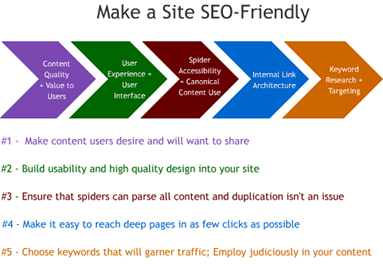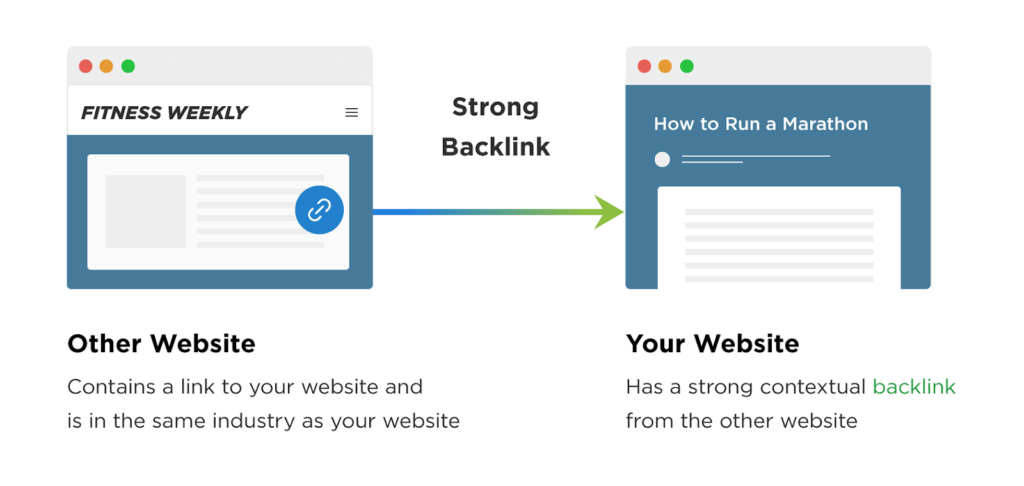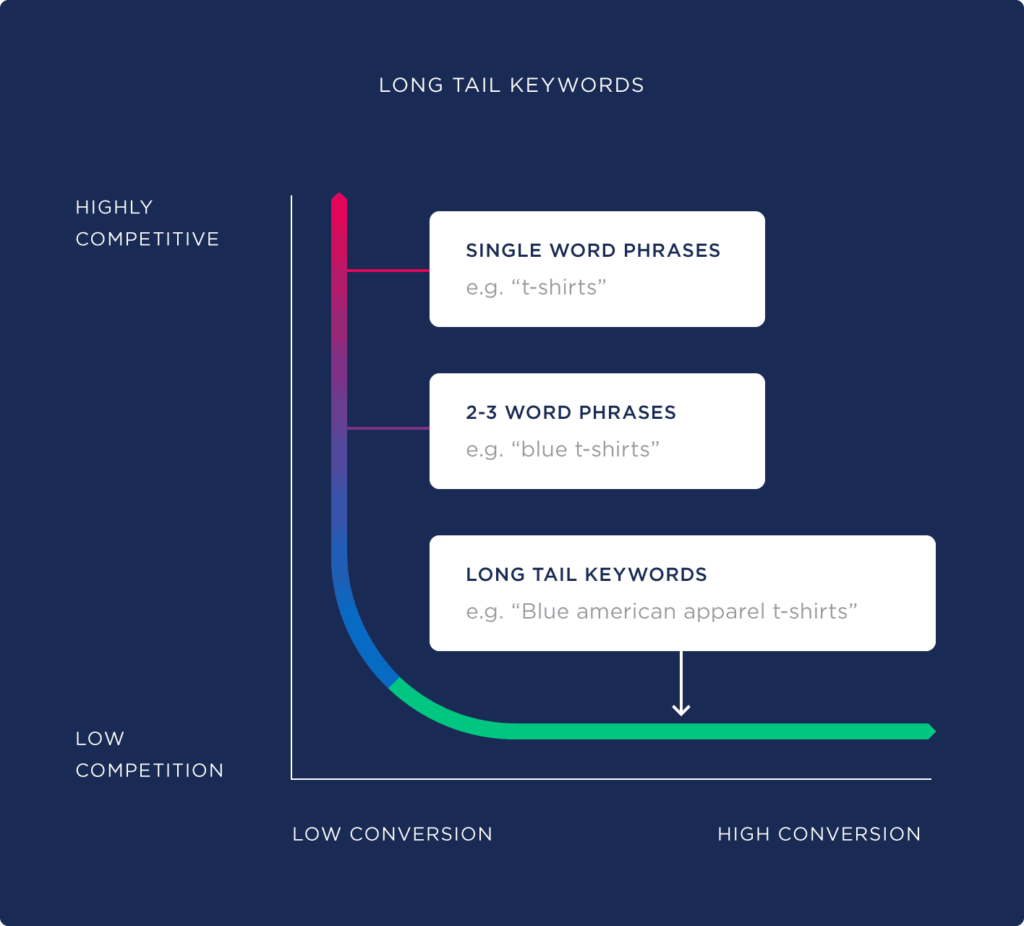
Website traffic is a critical driver of total company success, so learning numerous strategies to increase website traffic is essential. It boosts your ranks, resulting in even more visitors. Traffic enables you to track marketing approaches, improve search engine trustworthiness, obtain audience insights, and, most importantly, attract more consumers. However, while looking for ways to get more traffic, you’ll soon learn that several approaches are available. Where do you start?
To know how to drive traffic to your website correctly, you must first concentrate on obtaining quality website visitors. Traffic is meaningless if your involvement is stagnating and your conversion rates are falling. This is where we step in. The attached list contains ten ways to increase traffic and thereby influence the bottom line and raise online sales figures.
10 Ways To Increase Traffic
1. Make your website search-engine friendly.
When you first start, concentrate on choosing keywords that reflect your specialty to use as the foundation for your blog material and shopping sites. You should concentrate only on one or two core keywords per site. You may locate appropriate keywords using SEO tools such as Keywords Everywhere.

At first, concentrate on terms with a monthly search volume of less than 10,000. After a few months of developing blog material and improving product pages, you may begin targeting keywords with higher traffic. The key to growing web traffic is first to build a solid base of relevant keywords. Make the most of your online store’s blog since it may have the greatest influence on increasing organic web traffic.
2. Increase your backlinks
Backlinks are another critical component of SEO. When an external site connects to your site, it states that your website is reliable, and Google can identify it. Aside from SEO, backlinks can already attract visitors to your shop on their own. Users on such sites may click on yours, resulting in a purchase.

3. Target long-tail keywords
While numerous shorter keywords may appear in your keyword research, paying special attention to long-tail keyword potential is critical. This is a very effective way to increase traffic. These keywords are often more precise. Consequently, they have lower search traffic and, as a response, less rivalry. That means it’s easier to rank for relevant specific keywords and estimate searcher intent.

When you design a website experience that suits the searcher’s purpose, you are more likely to offer the material they want. This can help attract more traffic (organic) to the website from a certain demographic.
4. Use your website to host unique material.
Create a blog, a free course, Slideshare presentations, webinars, and other relevant material for your website. Maintain a consistent posting schedule and enable people to sign up, so they have the incentive to return.
5. Organize competitions and freebies
Make competitions and offers a regular component of your e-commerce plan, and you’ll give consumers a reason to come back to your site. Not to mention the viral marketing you’ll generate, particularly if you include a social-sharing component in your campaign.
When people participate in your competitions and giveaways, you will have the opportunity to promote them in the years ahead. Approximately one-third of contestants are open to receiving information from companies.
You’ll also get unique insights into their interests, allowing you to tailor your methods to their buying inclinations. Personalization is a major potential for marketers, given that 71% of customers are dissatisfied with impersonal experiences.
6. Include social sharing buttons.
Another method for driving traffic to your website is to add social share icons to easily accessible pages on your website, such as blog posts, sales pages, photos, and other material. These social share boxes make it simple for visitors to share your content, providing you with social confidence and traffic. When their circle sees these postings, they may visit your website.
7. Increase your Twitter marketing efforts.
While Twitter has cracked down on spammy automation, you may still use this traffic source. If you’re still learning how to improve website traffic, Twitter is an excellent place to start. You won’t have to be concerned about restricted reach. Using relevant hashtags, you might reach a larger audience than your following count.
When it comes to content marketing, one strategy to gain more traffic from Twitter is to share a hit-to-retweet link with individuals who are mentioned in the piece. This increases the exposure of your initial tweet, particularly if it contains a hashtag, since it may help you score better in the stream for the tagline used. Consequently, more people will see the tweet, and your website will get more clicks.
8. Participate in online forums.
Forums are online communities where users may ask questions and debate any subject. Some of the most famous and well-known forums include Quora and Yahoo Answers, where there are debates, groups, and threads on practically every subject conceivable. Remember that forum engagement must be natural and non-sales. Before marketing your company, you must offer value, create connections, and gain respect as a member. Only after that will you be able to add links to your website.
It is also worthwhile to investigate specialist forums about your business. This is a method of reaching a particular set of individuals.
9. Contact affiliates
Companies use affiliate marketing when they pay associates to promote their goods and drive website traffic. Affiliates get a share of the money generated by each sale they recommend. These purchases are often generated through internet visits. The associate may be a blogger or social media personality who shares a connection with their referral or tracking code. You pay the affiliate the agreed-upon fee each time someone uses that code to make a transaction.
10. Contact reporters via “Help A Reporter Out.”
Help A Reporter Out (HARO) is a website that allows journalists and writers to identify and connect with sources for topics they are working on. Sign up for HARO’s newsletters in your specific industry and watch for questions you can answer. Pay heed to any special pitch rules to improve your chances of acceptance. Often, the authors will discuss your brand and offer a link to your website.

Wrapping Up
Increasing website traffic is a never-ending chore, but it produces effects long after you start working for it. There are several causes for which your potential clients might visit your website; all you can do is select the cause that works the best for your company. Try any of these approaches in your demand generation plan for the next quarter to notice a substantial increase in website traffic.
FAQs
Google Analytics is an excellent tool for calculating website traffic. Google Analytics allows you to monitor web traffic or landing pages. You may also see the channels from which to get more traffic.
Web traffic is essential for a variety of reasons. The more visitors your site receives, the more prospective consumers you will have. The number of website visitors represents the opportunities for your company to make an impression, generate qualified leads, share your brand, and connect.
Increasing site traffic improves SEO. More straight and organic traffic to your website demonstrates to Google that your zone has high authority. Consequently, Google will place it higher in the SERPs (search engine result pages).
Website traffic growth, like many other indicators, may vary greatly depending on the stage of the firm and the audience. On the other hand, a month-to-month growth rate of 10-20% is often regarded as a good benchmark.
Latest Blogs
Explore how Google’s 2025 AI search updates triggered ranking chaos. Learn actionable strategies to adapt your SEO for AI Overviews, zero-click searches, and SERP volatility. Stay ahead now.
Learn how to rank on AI search engines like ChatGPT, Perplexity, and Gemini by optimizing your content for authority, structure, and relevance. Stay ahead in AI-driven search with this strategic guide.
Explore the best healthcare SEO services for your medical practice. Improve online visibility and effectively reach more patients in need of your services.
Get your hands on the latest news!
Similar Posts

B2C Marketing
5 mins read
Top Choices for Best Content Marketing Services in B2B Industries

Artificial Intelligence
5 mins read
How A Lead Generation Specialist Can Use AI-Powered Content Funnels to Drive Conversions

Artificial Intelligence
4 mins read